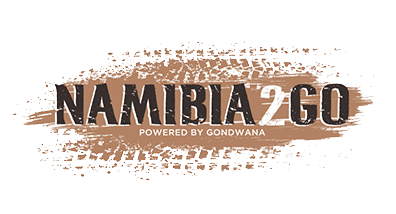We can be dreamers in our lives, and perhaps visionaries. And wouldn’t it be quite a dream to ensure that a piece of land will be preserved as a conservation area long after we’re gone. For me, that may remain just that, a dream. For Gondwana Collection Namibia? Well, they have already made it happen. It began thirty years ago when they bought their first farm adjoining the Fish River Canyon. Last weekend I joined Gondwana Canyon Park’s 23rd game count and was reminded what an incredible feat the 116 000-hectare conservation area actually is.
It was a freezing cold winter’s morning when sixty of us set off in eight vehicles on eight routes through the park. Bundled up in jerseys, beanies, jackets, scarves and gloves, I wondered if I would recognise my companions if I saw them again without their winter woollies. The night was just curling up for a good sleep, allowing the dawn to take over the next shift, as we drove out of Canyon Village in our open game-viewer. The sky on the horizon began to shyly display shades of orange, pastel pink and blue. When the sun decided it was time to boldly enter centre stage in an explosion of colour and take a deep bow, it was a magical heaven-sent show. The earth lit up in the gold of the morning light.
Our group of seven included a couple from Otjiwarongo who had driven 1000km to be part of this special occasion, two members from ECC (Environmental Compliance Consultancy), a representative from the Gondwana Brand & Marketing department, a lodge owner from the area and myself. Leading the group were team-leader Amden Kakuva from Gondwana’s Environmental and Social Impact (ESI) department and park game ranger, Fanuel Shafuda. Huddled up under our blankets we drove to the beginning of our route in relative silence, but as the sun rose in the sky and began to warm us and the landscape, and we spotted our first animals, the jokes, laughter and camaraderie began. And carried on until we drove back into the Village six hours later.
We had been well-briefed the previous evening at Canyon Village, where fires roared against the chilly evening, by Michelle Rodgers, the park warden, and Quintin Hartung, Gondwana’s Environmental and Social Impact manager. We were to look out for and count animals in a 500-metre radius around us, measuring their distance perpendicular to the road and recording the info (thanks to our team-leader who took on this important job). There were rules, of course, and these included not to use a camera or binoculars, but stick to the naked eye.
But we really didn’t need the extra help. It turned out that our accomplished team had excellent eyesight, could gauge distance expertly and had no problem counting animals, even when a herd of over ninety springbok was spotted a few hundred metres away and were moving like the grass blowing across the hills. We joked about distance, remembering our instructions to round off numbers and not to give decimals, as we spotted mountain zebra, oryx, ostrich, kudu and giraffe, the grazing and browsing species that were important for the game count. We also enjoyed our sightings of Ludwig’s bustard - the largest flying bird, pale chanting goshawks, and quiver trees and camelthorn trees heavily laden with sociable weaver nests. The route led us through various terrains, through a grassy landscape dotted with desert broom and three-thorn bushes and celebrated by quiver trees, over burnished rocks interspersed with euphorbia bushes, over sandy riverbeds and up rugged hills to return us back to our start windblown and smiling. Everyone remarked what a wonderful morning it had been, with the pair from Otjiwarongo saying that it was well-worth the thousand-kilometre drive.
As we had learned the previous evening, the aim of the annual game-count is to keep track of the environmental trends of the park, following rainfall and vegetation growth, to understand and keep to the carrying capacity of the land in order to best manage the park. This important management tool has been in place for more than twenty years, providing the data to optimally understand and manage the environment and its wildlife.
The Gondwana Canyon Park success story began three decades ago when the first farm was bought to create a conservation area. It was soon realised that the only way to fund such an initiative would be tourism. At that time, after years of drought and intensive sheep farming, the land in the area had become denuded and farmers had started to sell their land and move to the towns. The first lodge, Canyon Lodge, was built on the farm Karios. It would be Gondwana’s first lodge and would eventually grow into the large hospitality group, Gondwana Collection Namibia, with lodges and properties throughout the country.
Over the next thirty years another ten adjoining farms were acquired, expanding the conservation area bit by bit. As it grew, fences were dismantled allowing wildlife to once again follow the scattered rainfall in the area. Research was done to establish what animals had lived in the area and the land was gradually restocked. Slowly the vegetation began to grow back and the wildlife started to flourish and restock the greater Fish River Canyon area. The sounds of the wild once again echoed through the trees and over the koppies. The Gondwana Canyon Park became one of the largest privately-owned professionally-run conservation areas in southern Africa, with annual game counts, ecological monitoring, alien plant removal and anti-poaching patrols.
This year, the success story is going to be taken one notch higher, the Gondwana Canyon Park will also soon become a sanctuary for black rhino. Partnering with Elephants, Rhinos & People Namibia (ERP), which has acquired neighbouring farmland to increase the size of the park to 122 000 hectares, and the Ministry of Environment, Forestry & Tourism (MEFT), the sanctuary will be a vision matured and come into its own. A crucial part of this endeavour will be ERP’s cutting-edge anti-poaching and surveillance expertise to ensure the safety of these critically-endangered animals.
A key part of Gondwana’s ethos has always been to give back to nature what belongs to nature, one which they have always honoured, seeing themselves not just as landowners, but as guardians of the earth. The growth of the park continues to expand the vision of creating a safe haven for wildlife and restoring the land.
The participants of the game count gathered at Canyon Village, as the canyon day quietened outside transitioning into the starry night and the welcome fireplaces blazed, to hear the results of the morning’s activities. We listened carefully as the new data was explained to us with a clear PowerPoint presentation. We heard how the wildlife had responded well to the good rainy season and was in good condition. It also meant that less animals were visible on the routes as they could now move further afield. The carrying capacity of the land was still adequate, taking into account wildlife numbers and available vegetation. The Park records were updated with the new data, keeping the team in the know and on the right track. And fun was had by all. All that was left to end the event in proper game-count fashion was a final braai supper and delicious feast that awaited the participants for a job well done. It was enjoyed with chatter and laughter. And with the knowledge that there is a group of people who care enough to want to make a difference.


.png)
.jpg)
.jpg)




.png)

SUBMIT YOUR COMMENT